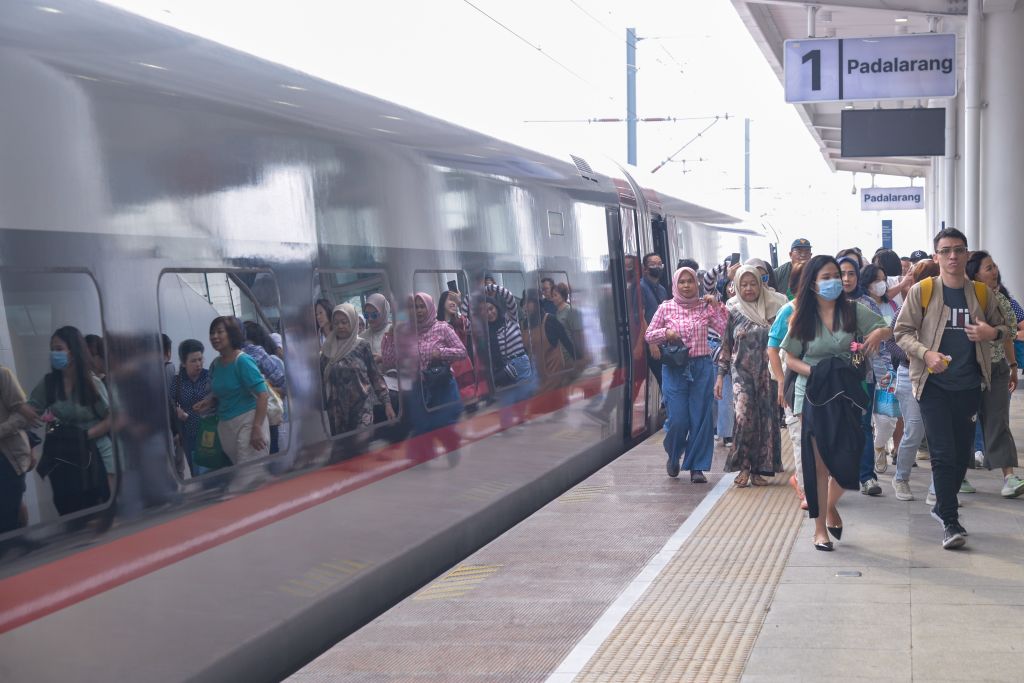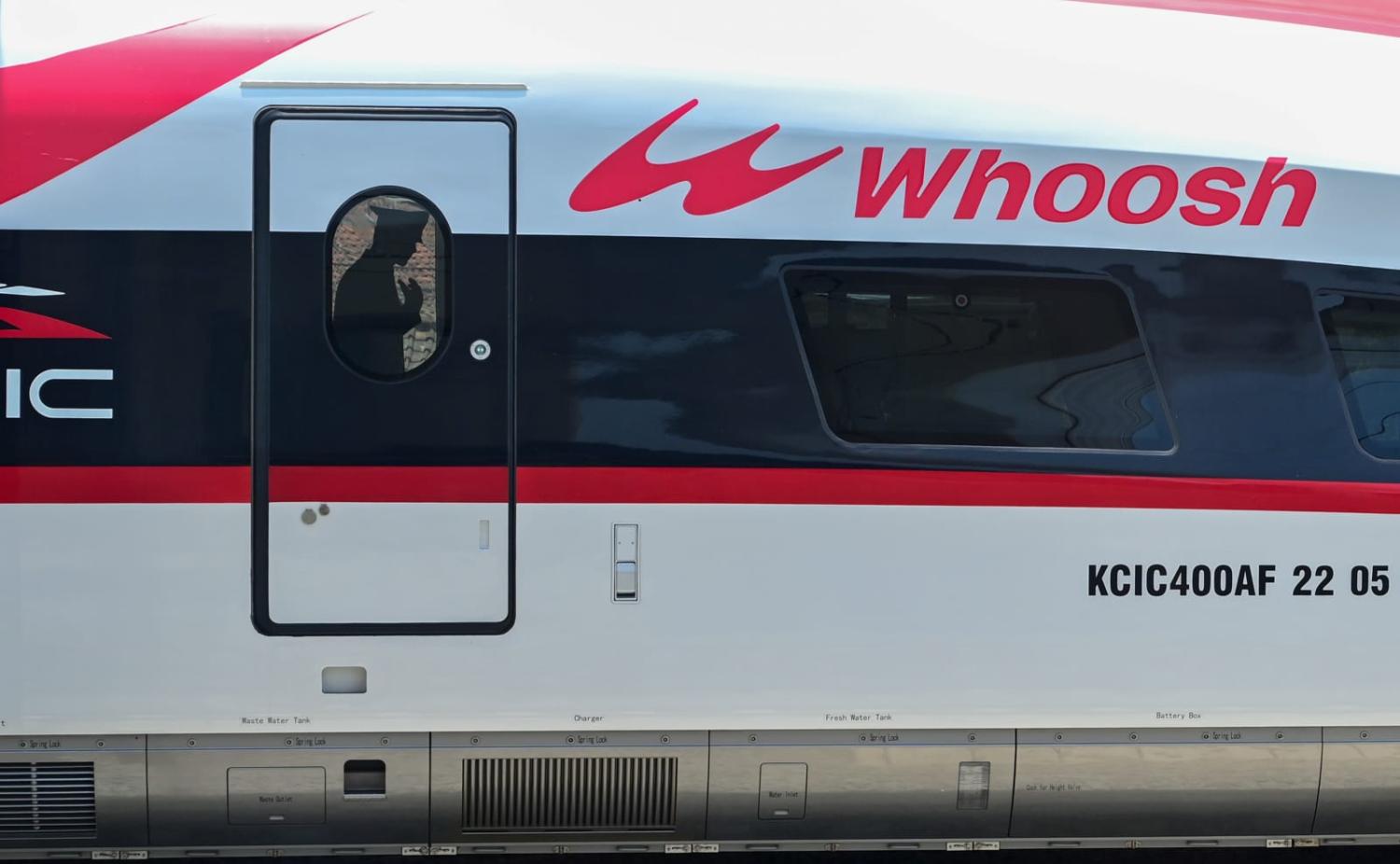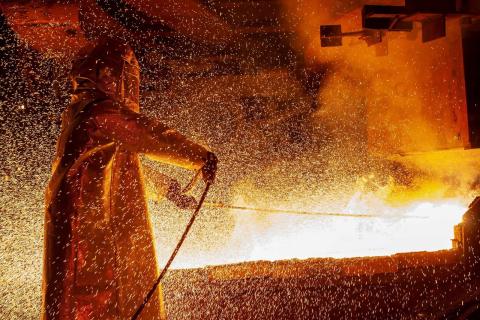The first high-speed railway in Southeast Asia began operating in October, four years behind schedule and considerably over budget. “Whoosh” railway can reach speeds of up to 350 kilometres per hour and connects two of Indonesia’s largest cities, Jakarta and Bandung. For many, this high-speed railway signifies a modernisation of Indonesia’s transportation sector. For others, doubts continue to linger even as the railway enters the operational phase.
Trips between Jakarta and Bandung take three hours by conventional train or two hours by car. High-speed rail cuts the journey to only 40 minutes – but the price tag that Indonesia is paying might exceed the benefits.
President Joko Widodo’s political drive for infrastructure development in Indonesia has brought remarkable results. Within nine years, the administration has built about 2,000 kilometres of toll roads. And the new high-speed railway adds to that legacy. But it will also have an enduring cost.
Policymakers acknowledge that public transportation projects will take years to be profitable, but that should not be an umbrella under which to hide from questions about sustainability, risks or effectiveness.
The new railway was financed by a loan from the China Development Bank and a fund for the Indonesia-China’s state enterprises consortium (KCIC). The final price tag was significantly higher than the global average for building high-speed rail. The Jakarta-Bandung railway cost $52 million per kilometre, higher than high-speed rail in China (ranging between $17–30 million per kilometre), France (about $24 million per kilometre), or Spain ($27 million per kilometre). It is, however, worth noting that variables such as terrain complexities and population density in the project area also drove this price.

Over an adequate distance, high-speed rail can be competitive against more carbon-intensive flights along a matching corridor. However, in the case of the Jakarta-Bandung high-speed railway, the $7.3 billion project connected two cities that already enjoyed 38 railway trips per day. There was little economic case to create a faster alternative – unless the line is extended to more distant cities such as Surabaya.
Any further development will depend on the financial viability of the project, the capacity to generate money to cover the operational cost and debt. Indonesia bears the $1.2 billion cost overrun as the majority shareholder. Although the “Chinese debt trap” narrative surrounding poor countries burdened by Beijing’s unsustainable loans might be a tempting critique of the project for the Indonesian public, the risk is more on the operational side. Indonesia’s state-owned enterprise sought a bigger share in the KCIC Consortium, taking 60 per cent, leaving China Railway Engineering Corporation the rest. This signalled Indonesia’s ownership, but it also meant carrying the huge upfront costs associated with the project, especially around land acquisition, as well as unforeseen costs linked to delays.
The government is now set to use the state budget to cover the cost overrun, which risks increasing the national deficit.
The KCIC Consortium can seek to diversify its income stream from passenger-demand only. The prize of being Southeast Asia’s first high-speed railway means the consortium could seek to offer the “experience” of travel augmented with entertainment or retail shops at the station. But ultimately, commercial viability will be predicated on commuter demand. A study into the line published last year found that potential demand for high-speed railway comes from existing train users with high income levels, while those in the lower income bracket prefer using existing inter-city trains. With a ticket price twice as expensive, high-speed railway becomes less attractive to some passengers. China can make the cost for users of its high-speed railway competitive with ground or air travel and so attracts more than 1.7 billion passengers annually from all income groups.
The early operation of the Jakarta-Bandung high-speed railway has enjoyed a demand surge with 13000 passengers per day, higher than the 7000 passengers each day on intercity trains. But once the early public excitement fades, the challenge will be to build a loyal customer base. This could involve targeting passengers that value time more than money – e.g., intercity workers. It may be possible for the high-speed railway to partner with companies to provide employee packages.
The other opportunity from the Jakarta-Bandung high-speed railway is having provided Indonesia access to Chinese technology, the world’s largest high-speed rail network builder. A transfer of technology scheme can open the door to advance Indonesia’s domestic production to grow as a player in the region’s railway industry. But again, this potential all depends on ensuring the Jakarta-Bandung venture is a success.
Indonesia’s policymakers and business leaders must ensure a prudent business case is made with a clear estimation on the risk appetite and ability to repay debt. The outcomes of this infrastructure investment eventually serve as foreign partners’ evaluation for future investment decisions. Delivering and operating the first high-speed railway in Southeast Asia is a milestone for the country – only if the cost doesn’t become a millstone, too.

